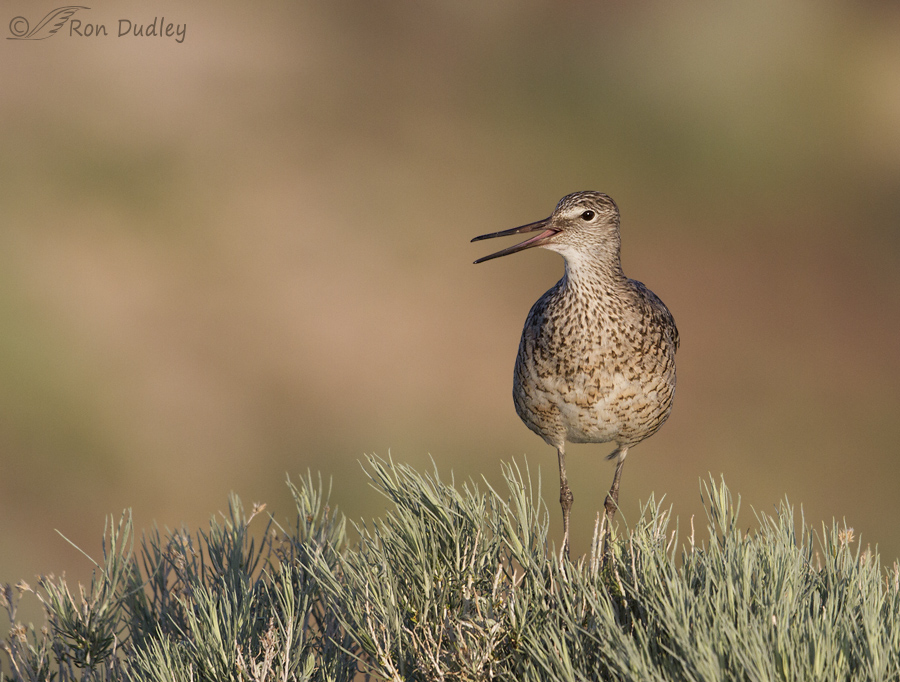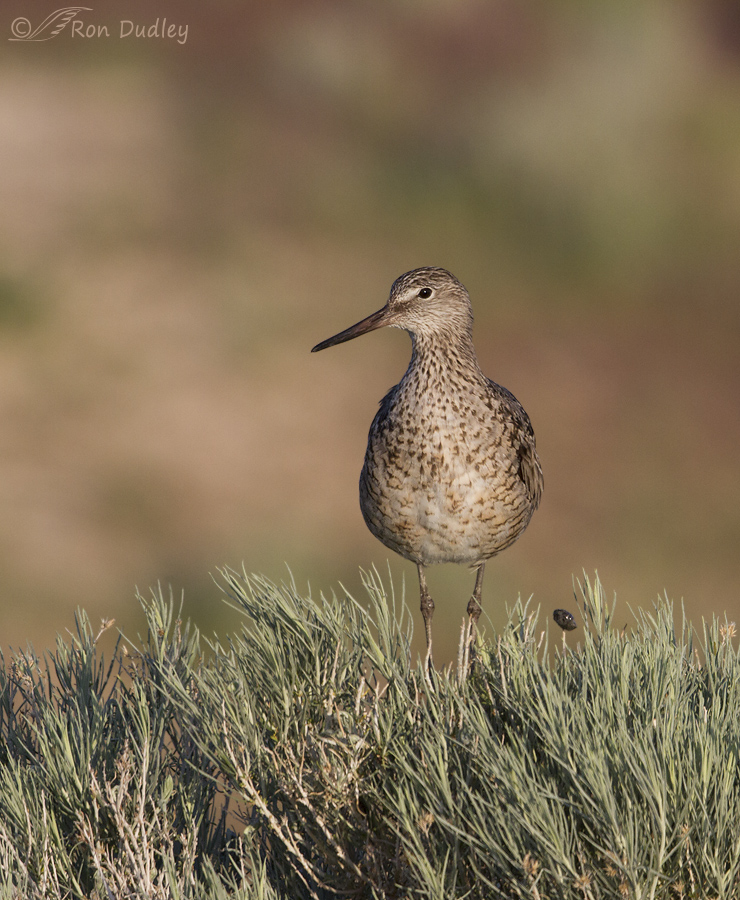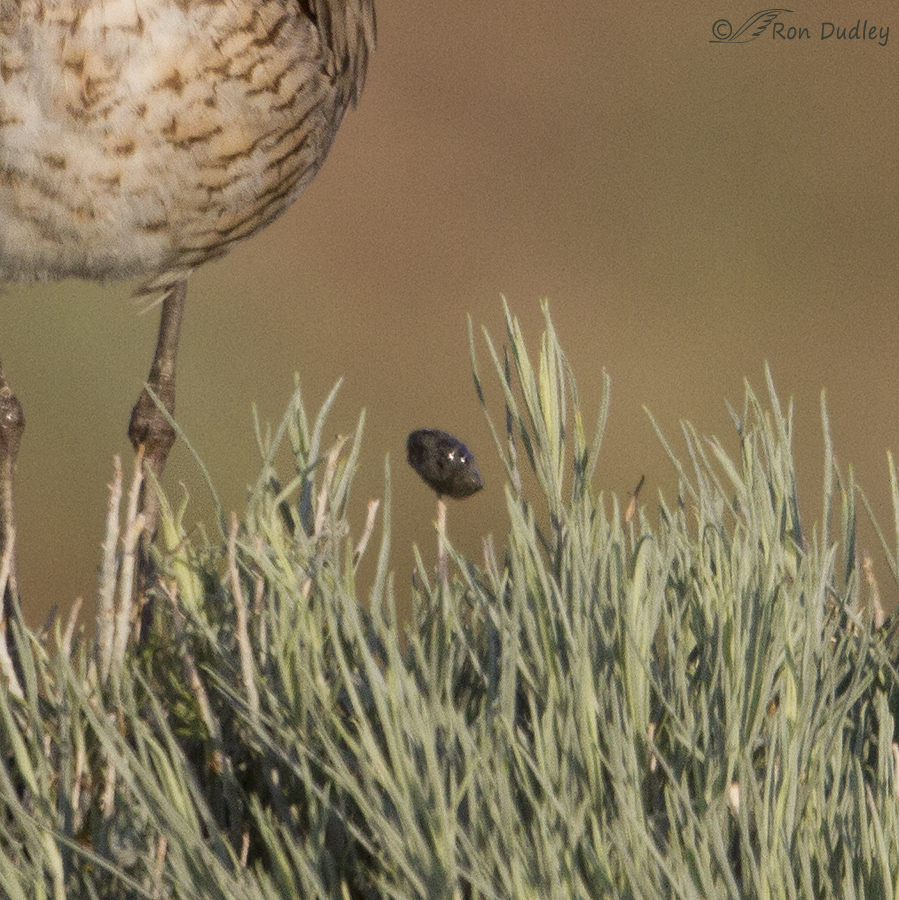After eight years of photographing birds it’s not every day that I see something new but yesterday I did.
1/2500, f/5.6, ISO 640, Canon 7D, Canon EF500mm f/4L IS II USM, not baited, set up or called in
I photographed this Willet on sagebrush yesterday morning on Antelope Island. It would occasionally call to other Willets in the area but that was about the only interesting pose variation it gave me and eventually I lost some interest because head-on poses aren’t my favorites and I already had plenty of shots of that posture. That was a mistake on my part.
If pressed I’d admit that I pride myself on my ability to anticipate when a bird is about to cast a pellet. Usually they struggle a little (or a lot) to get it out and that gives me time to get ready to fire off a burst and try to catch the pellet in mid-air and even sometimes get a series of shots as the pellet is coming out and falling. In fact, here’s what BNA Online has to say about the process of Willets casting pellets:
- “Willet’s behavior when doing so (casting pellets) resembles retching actions of regurgitation, lasting 12–25 min, with fluid dripping from bill and flicking bill sideways.”
1/1000, f/9, ISO 640, Canon 7D, Canon EF500mm f/4L IS II USM, not baited, set up or called in
But this bird gave me no warning at all – in an instant the pellet was out and I missed the shot(s) because my attention had wandered. In fact it surprised me so much that when I noticed it happening I jerked the lens when I attempted to push the shutter button too fast and all I ended up with was a blurry mess.
But what really surprised me was the fact that the pellet impaled itself on a sharp, dead twig from last years growth as it fell (or was thrown). It just happened to fall in about the only place that could happen. At first I thought that the pellet was sticky because it was wet so that stickiness caused it to adhere to the twig but…
this huge crop (5.6% of original image) of the same image convinced me that the pellet actually became impaled on the twig. It stayed there for some time but when the Willet flew off the pellet was dislodged by a beating wing.
All this is no big deal of course but little things like this often catch my interest.
Ron





I always think it is the small things that we don’t anticipate that are most fascinating! Good for you to even notice it!
I think it IS a “big deal” because the “pretty pictures only” school of wildlife photography probably wouldn’t share an image like this…and we wouldn’t get another glimpse into interesting, if not glamorous, behavior…you provide both,n thank goodness!
What an incredible thing to see – and capture. And such an ephemeral moment too.
Glad to know you can still be surprised. Very Interesting Ron!
Charlotte
I think the pellet impaled itself so you could see and photograph it… definitely an interesting thing to catch.
Yup, that must be the reason, Susan! Thank you.
That pellet almost looks like a snail, but for the way it,the pellet, is impaled on the twig. I have seen Willet’s eat small snails which suggest to me that their digestive juices are strong enough to penetrate the snails operculum and get at the snails internal organs. Sorry, I’m not suggesting the pellet is a snail, just looks like one. Great shots Ron, brings back memories of when I was banding terns and constantly heard the racket of the Willets. Didn’t bother me, just my co-workers.
Hmmm, I see what you mean about the pellet looking like a snail, Dick. I wonder if the coiling is sinistral or dextral?…
I agree, the call of the Willet could eventually get monotonous.